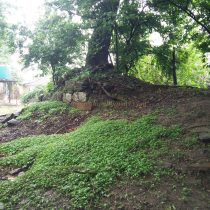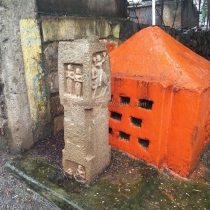DHADGAON
TYPE : FORTRESS
DISTRICT : NANDURBAR
HEIGHT : 0
GRADE : EASY
After the partition of Khandesh, Nandurbar district with six other talukas was formed. Nandurbar district borders touch to Madhya Pradesh and Gujarat state directly. In this tribal-dominated Nandurbar district, there were not one or two forts but 15 forts in the form of the hill fort, ground fort, and fortress. Apart from 7 forts in the book “Maharashtratil Gadkille” by DurgMaharshi Pramod Mande, these forts are not mentioned anywhere else. In today's modern age, information about these forts is not even available on the internet. I have tried to present the information I got while our group made a study tour of all these forts on this website. Of these, two forts, Hatmoida and Ashte, have been destroyed and the remaining 13 forts are still standing today. These 13 forts have 1 hill fort, 3 ground forts, 2 city forts, and the remaining 7 fortresses.
...
Due to the river Tapi flowing through the Nandurbar district, it is divided into North and South. Dhadgaon fort is located in Akrani taluka in North. Dhadgaon and Nandurbar are 85 km away from each other and can be reached via Dhanora or Prakasha route. Dhadgaon fortress is in the western part of the village and the office of the Forest Department is in this fortress. we reach the gate of Dhadgaon fortress asking for the address of this office. Akrani fort is also known as Dhadgaon fort so be careful about location. The fort is about half an acre in size and has four bastions at the four ends and an east-facing gate. The gate and three bastions of the fort have been destroyed and a Dargah has been set up on one of the remaining bastions. In front of the flattened gate of the fort, there is a small dome with an idol and next to this dome there is a carving on all four sides. The ramparts have been severely damaged and today only 5 to 6 feet high stone ramparts remain on all four sides. As there is a forest department office inside the Dhadgaon fort, the original remains have been destroyed to build the office. The well inside to supply water to the fort was damaged two years ago. Also, there is another well in the hollow area outside the ramparts at the back of the fort. As there were no other remains in the fort, the fort round could be completed within 15 minutes. In the 14th-15th centuries, this part belonged to the Farooqi dynasty. The first Sultan of Khandesh, Farooqi Malikraj, founded the cities of Sultanpur and Nandurbar and their environs. In 1530 it was invaded by Gujarat Sultan Muzaffar and Farooqi Malikraj had to return to Thalnera. When Mahmud Shah Begda (III) became the king of Gujarat in 1536, he gave Sultanpur and Nandurbar to Mubarak Khan Farooqi as he had promised while he was imprisoned at Ashirgad. Later, however, the Mughals came to power in this area. According to the British records in the Mumbai Gazette, the fort was repaired in 1862 and there is an abundance of water here and a detachment of the Bhilla battalion was stationed here.
© Suresh Nimbalkar





